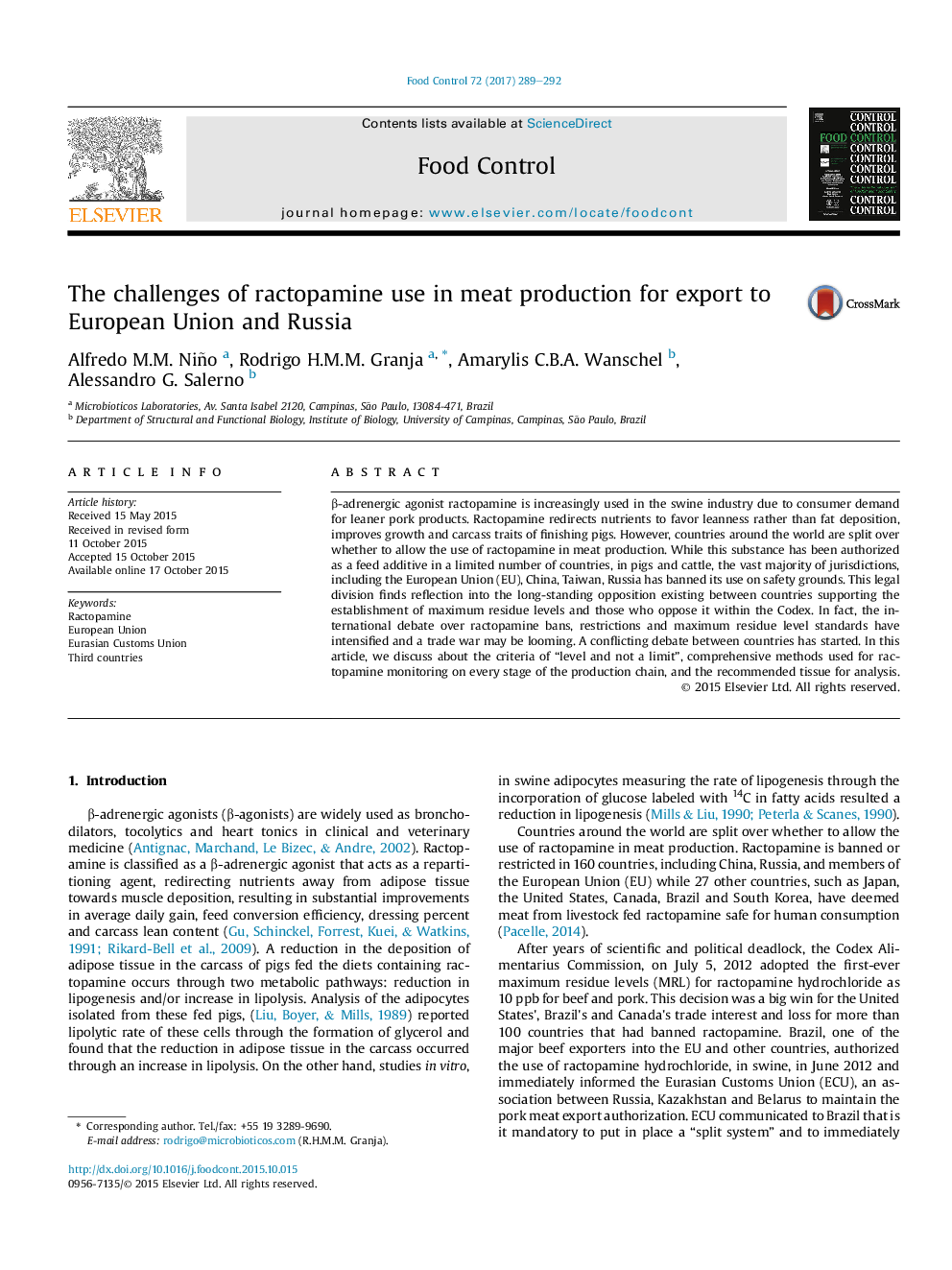| کد مقاله | کد نشریه | سال انتشار | مقاله انگلیسی | نسخه تمام متن |
|---|---|---|---|---|
| 5767367 | 1413194 | 2017 | 4 صفحه PDF | دانلود رایگان |
- Ractopamine is widely used as a feed additive in meat production.
- World is split over whether to allow or not use ractopamine.
- International debate over ractopamine has intensified and a trade war is looming.
- Comprehensive methods for ractopamine monitoring need to be considered.
β-adrenergic agonist ractopamine is increasingly used in the swine industry due to consumer demand for leaner pork products. Ractopamine redirects nutrients to favor leanness rather than fat deposition, improves growth and carcass traits of finishing pigs. However, countries around the world are split over whether to allow the use of ractopamine in meat production. While this substance has been authorized as a feed additive in a limited number of countries, in pigs and cattle, the vast majority of jurisdictions, including the European Union (EU), China, Taiwan, Russia has banned its use on safety grounds. This legal division finds reflection into the long-standing opposition existing between countries supporting the establishment of maximum residue levels and those who oppose it within the Codex. In fact, the international debate over ractopamine bans, restrictions and maximum residue level standards have intensified and a trade war may be looming. A conflicting debate between countries has started. In this article, we discuss about the criteria of “level and not a limit”, comprehensive methods used for ractopamine monitoring on every stage of the production chain, and the recommended tissue for analysis.
Journal: Food Control - Volume 72, Part B, February 2017, Pages 289-292
